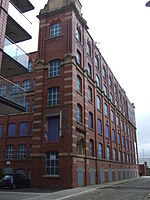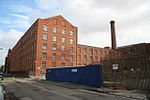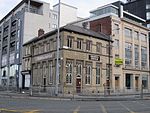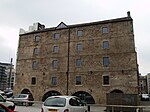Brownsfield Mill
1825 establishments in EnglandBrick buildings and structuresBuildings and structures completed in 1825Former textile mills in the United KingdomGrade II* listed buildings in Manchester ... and 3 more
Grade II* listed industrial buildingsGreater Manchester building and structure stubsTextile mills in Manchester

Brownsfield Mill, located on Binns Place, Great Ancoats Street in Manchester, England, is an early 19th century room and cotton-spinning power mill constructed in 1825. Hartwell describes it as "unusually complete and well preserved". The chimney is now Manchester's oldest surviving mill chimney. The building housed the A.V. Roe and Company aviation factory in the early 20th century. In 1988, it was designated a Grade II* listed building.
Excerpt from the Wikipedia article Brownsfield Mill (License: CC BY-SA 3.0, Authors, Images).Brownsfield Mill
Leech Street Footbridge, Manchester City Centre
Geographical coordinates (GPS) Address Nearby Places Show on map
Geographical coordinates (GPS)
| Latitude | Longitude |
|---|---|
| N 53.4821 ° | E -2.229 ° |
Address
Leech Street Footbridge
M4 5BY Manchester, City Centre
England, United Kingdom
Open on Google Maps











